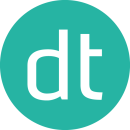If you want to know your consumer, nothing beats going directly to the source, said Wipfli Digital Head of UX Research Brad Carrera.
Sure, it’s important to have a well of research and data on your customers' behaviors, spending habits and so on. “But the most profound product revelations I’ve been a part of came as a result of direct interaction with customers,” Carrera said.
That belief — that truly understanding the end user takes a personal touch — is what guides these three Chicago tech companies in capturing the voice of the customer. Some of them use surveys, while others depend on feedback loops, AI or even a simple phone call to extrapolate this information.
“Our users are humans, and humans aren't static,” Carrera said. “Capturing deep, actionable insights requires triangulation of multiple data types.”
Harnessing these methods and discerning what works best for both the company and the customer is critical, explained Aaron Enequist-Leiker, Reverb’s director of design and UX.
“Because the voice of the consumer informs all that we do,” Enequist-Leiker said.

Head of UX Research Brad Carrera said deeply understanding your customer, on a professional and human level, is a key component to success. Along with plenty of research, he and his team rely on surveys and one-on-one interviews to gain insights from their clients and customers.
Where is the best place for your company to gather the feedback needed to capture the voice of the customer?
Nothing will ever replace going directly to the source. To get the lowdown on product end users, we start by asking our clients what they think they know about their customers and what they can prove they know about their customers. What makes our team and the brand teams we partner with so special is that everyone, and I mean everyone, participates in research. Keynote decks bursting with insights are great as a leave-behind, but if you really want to understand your customers, you have to talk to them. The most profound product revelations I’ve been a part of came as a result of direct interaction with customers.
When it comes to qualitative studies, one-on-one interviews are my method of choice.’’
What tools do you use to synthesize this data in order to capture deeper insights into your customers' behaviors and preferences?
For surveys, I’ve come to love SurveyMonkey. John Doyle, my quantitative counterpart and our head of analytics, focuses on providing behavioral insights via Google Analytics/Firebase event tracking and multivariate A/B experimentation.
When it comes to qualitative studies, one-on-one interviews are my method of choice. Zoom, a screen recorder, transcription software, a willing participant and a skilled interviewer are all you really need to gather high-quality qualitative data.
How do you leverage VoC to improve the different stages of the customer journey or to inform your product/marketing/CS strategies?
Internally, we utilize personas to develop effective proposals based on the potential client’s role and level of experience in digital. We leverage journey maps to identify project pain points and hone our execution process. In product design, the type of research we use depends on the product's level of maturity. For bespoke products, we create personas as a way to identify our users’ goals and pain points. We also rely on usability testing to gut check our design decisions and course-correct when necessary.
Director of Design and UX Research Aaron Enequist-Leiker said that keeping a close eye on how customers interact with Reverb’s website informs them of customer needs and concerns.
“Because it’s a two-sided marketplace where anyone — from rock stars like Green Day’s Billie Joe Armstrong to local music shops to hobbyists — can buy and sell musical gear, our user experience team is always collaborating closely with our customer engagement team full of musicians,” Enequist-Leiker said.
Each month, we invite buyers and sellers to use Reverb while we watch what they are doing on the site.’’
Where is the best place for your company to gather the feedback needed to capture the voice of the customer?
Our customer engagement team uses a system of feedback loops to help us identify where buyers and sellers are feeling friction on the site. For example, the team told us that sellers were constantly contacting Reverb after they sold a piece of gear to ask, “Where is my money?” By adding language to the site to let sellers know that the payment for the item was approved and the bank would disperse the funds shortly, we decreased the amount of sellers asking about payments by nearly 20%. This fixed a problem for both our sellers and customer engagement reps.
What tools do you use to synthesize this data in order to capture deeper insights into your customers' behaviors and preferences?
Each month, we invite buyers and sellers to use Reverb while we watch what they are doing on the site. We give them a prompt like “Find a Tascam 388 Studio 8 1/4” 8-Track Tape Recorder” and pay attention to what they instinctively click or type. This helps us understand how buyers navigate our marketplace and gives us an opportunity to ask questions firsthand. Our team also uses a mixed-method research approach, including surveys, user interviews and usability testing, as well as customer behavior analysis tools like Amplitude to analyze, synthesize and identify deeper insights.
How do you leverage VoC to improve the different stages of the customer journey or to inform your product/marketing/CS strategies?
An area of the consumer journey that user research recently helped us demystify was the Reverb mobile app. We noticed that players would begin searching for music gear through the app and then suddenly stop what they were doing. Through user interviews, we found ways to help people easily pick up where they left off without them having to do anything on their end. That way, if a user was on the app and landed on the perfect Moog Minitaur Analog Bass synthesizer, they could stop using the app and then easily pick up where they left off later.
Vice President of Marketing Strategy Jennifer Bassik said DialogTech’s purpose is to capture the voice of the customer — literally. During a phone call, their technology transforms the speech of a customer into predictable analytics with the use of AI, which gives businesses critical insights into their customers’ behaviors and needs.
Where is the best place for your company to gather the feedback needed to capture the voice of the customer?
The best place for companies to capture the voice of the customer is through conversation analytics platforms for inbound phone calls — platforms like DialogTech. Consider all the times you’ve called a business. You have so much intentionality and purpose when making that call. You chose the phone channel over any other form of communication because you wanted to address a specific need you had at that very moment. That sentiment, the questions you bring to the call, the conversation you have over the phone — that’s powerful, first-party data straight from the voice of the customer that AI-powered conversation analytics platforms can capture.
AI transforms speech into predictable analytics, which allows businesses to glean insights into customer behavior and act accordingly.’’
What tools do you use to synthesize this data in order to capture deeper insights into your customers' behaviors and preferences?
The voice channel is inherently unstructured. It is free-flowing, unpredictable and personal. Unlike survey data or personally identifiable information (PII), you can’t squeeze someone’s conversation into a spreadsheet and track it. That’s where the power of AI comes in. AI transforms speech into predictable analytics, which allows businesses to glean insights into customer behavior and act accordingly.
How do you leverage VoC to improve the different stages of the customer journey or to inform your product/marketing/CS strategies?
DialogTech’s platform reveals hidden conversations between a business and its customers. Those hidden conversations align with the exact metrics that marketers are accustomed to tracking, like new customer acquisition and customer lifetime value. By capturing data on what took place before the call (the campaigns, ads, keywords, channels, and webpages that led to a consumer making a call); during the call (the actual conversation that occurred); and post-call (prescriptive actions to maximize customer outcomes), marketers are armed with the full-funnel data they need to reach their growth targets.













